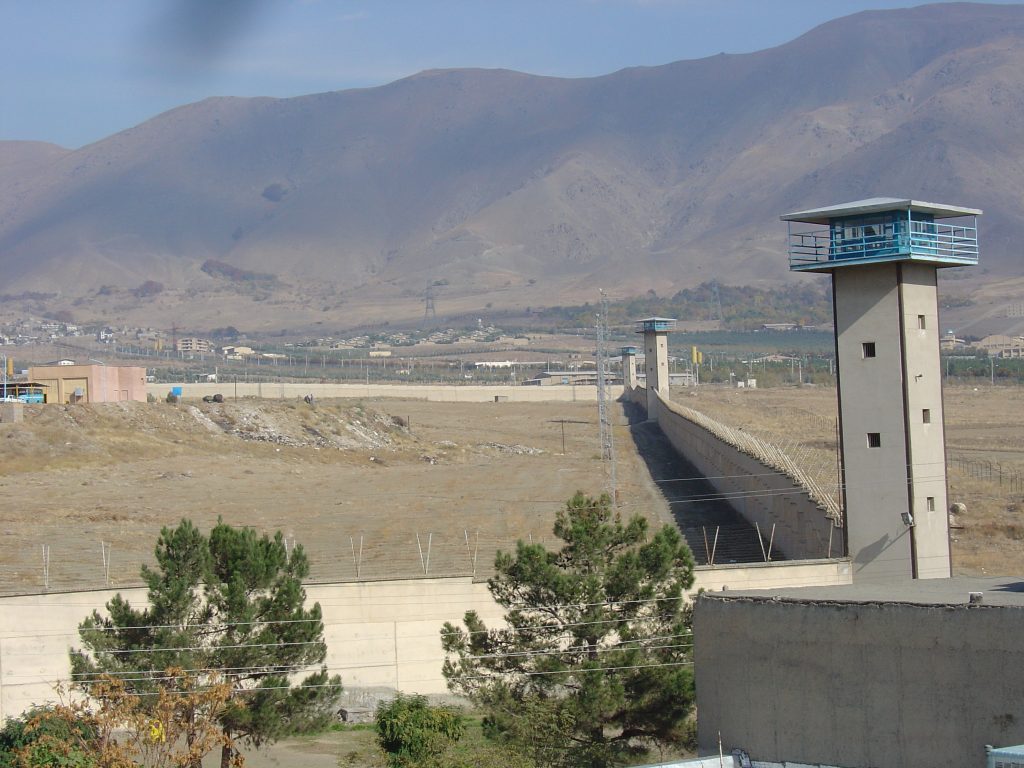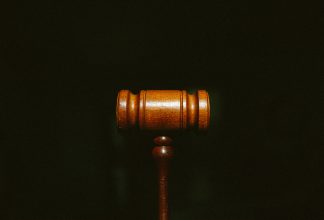Report 56: The plaintiff counsels’ closing statements

In our previous report, we provided a summary of the prosecution’s closing statement conducted on 16 and 18 October 2023.
In this report, we have summarised the plaintiff counsels’ closing statements, presented on 31 October and 6 November 2023.
Opening of the trial day
Presiding judge Lund opened the trial day by welcoming everyone to the Court. He explained that the day’s court session would be dedicated for plaintiff counsels Hjalmarsson, Hesselberg and Hadding’s closing statement, whilst plaintiff counsel Lewis would present his closing statement on 6 November.
The floor was then handed over to plaintiff counsel Hjalmarsson to begin his closing statement.
Plaintiff counsel Hjalmarsson’s closing statement
Plaintiff counsel Hjalmarsson began by outlining his closing statement and explained that he would cover a range of critical points, including the identification of the defendant, his role in Gohardasht prison, the reliability of the human memory after a significant time lapse, and the potential presence of PTSD among plaintiffs and witnesses. Hjalmarsson further explained that he would address the statements given throughout the proceedings by the 10 plaintiffs that he represents.
Hjalmarsson began by addressing and refuting the claims made by defense counsels throughout the proceedings in Appeals Court about alleged discrepancies in the plaintiffs’ statements and the alleged will among the plaintiffs to frame the defendant. Hjalmarsson stated that conflicting statements were not unusual and that all the plaintiffs and added that it was highly unlikely that all witnesses in the current case would have conspired and deliberately provided false information about the defendant. Hjalmarsson argued that if the witnesses had in fact conspired to align their testimonies, the allegations concerning the defendant’s conduct would have been far more extensive and with fewer discrepancies.
Furthermore, Hjalmarsson noted that several plaintiffs and witnesses had written about the defendant several years prior to his arrest, which indicated a pre-existing knowledge of him. Hjalmarsson argued that this further strengthened the credibility of the plaintiffs and witnesses and confirmed that their statements about him were not fabricated after the arrest of the defendant.
Hjalmarsson continued by addressing the defense counsels’ criticism against the prosecution and the court and its claim about the defendant not enjoying his right to a fair trial. He argued that the prosecution had thoroughly ensured the quality of the investigation, that the trial had been conducted fairly and that it had spanned over 90 days in District Court. He added that the defendant had been heard over the span of eight days in District Court and had been given the opportunity but had opted out from being heard again in the Court of Appeal. Hjalmarsson emphasised that he had never encountered a case where anyone was given such an extensive amount of time to speak. Hjalmarsson also expressed his concern about the tone and criticism from the defense counsels towards the prosecution. He addressed how it was reiterated by the defense counsels several times that visits, optometry, dental care, etc., were impeded. While desiring better care and circumstances in jail, Hjalmarsson emphasized how this was beyond the scope of the case at hand.
Hjalmarsson then addressed the new evidence presented by the defense counsels in the Court of Appeal and the addition of a new expert witness by the name of Eduardo Toledo. Hjalmarsson questioned Eduardo Toledo’s impartiality based on the fact that Toledo supposedly represented the defendant’s family but also because he lacked insights into the actual conditions in Gohardasht prison.
Hjalmarsson proceeded by addressing various statements made by the plaintiffs he represented. He began by stating how the plaintiff’s statements strongly supported the assertion that the defendant in fact was the person that the plaintiffs had met in Gohardasht prison, including accounts of plaintiffs and witnesses who had seen the defendant in Gohardasht prison without a blindfold, affirming his presence and interactions with the death committee. Additionally, Hjalmarsson recounted how several plaintiffs had encountered the defendant prior to, during, and after the period of the alleged crimes and underlined that this further strengthened the claim that the defendant is in fact the person that they claimed him to be. Hjalmarsson concluded this part by stating that the testimonies, combined with the prosecution’s comprehensive investigation, form a robust basis for this.
Hjalmarsson further addressed various statements made by the plaintiffs which he considered to establish that the defendant played a role in selecting and escorting prisoners to the execution site, thereby participating in the mass executions. With the central question being whether the defendant actively played a role that would classify him as a perpetrator, Hjalmarsson stated that the defendant’s actions were crucial for the execution of the crimes at hand, and that unlike the argumentation of the defense counsel, Hjalmarsson believed that one could not separate the defendant’s action from the bigger picture of the crimes that occurred at Gohardasht prison. The fact that he was merely doing his job did not mitigate this. Consequently, Hjalmarsson believed that the defendant should be regarded as a perpetrator.
Regarding the characterisation of the armed conflict and whether it was to be defined as a non-international (NIAC) or an international armed conflict (IAC), Hjalmarsson referred to the argumentation and position of the prosecution. Hjalmarsson noted, however, that three of his ten clients believed the conflict to be a NIAC, in line with plaintiff counsel Lewis’ position, while the rest believed it to be an IAC.
Hjalmarsson concluded by stating that the case consisted of extensive oral evidence in the form of plaintiff and witness statements as well as extensive written evidence. He added that many gripping stories involving death anxiety, torture, and inhumane treatment were recounted during the nine months that the trial had been ongoing in District Court and argued that the defense counsels’ attempts to normalise these conditions sharply contrasted those narratives. Hjalmarsson went on to say that the profound suffering that the plaintiffs endured was encapsulated by a quote by one of the plaintiffs who, when asked in District Court whether he requested compensation had responsed: “No thank you, my life is already ruined.”
Hjalmarsson concluded by stating that the charges had been substantiated and argued that the judgement from the District Court should be upheld but with the amendments requested in the prosecution’s appeal which extends the responsibility of the defendant to encompass a wider range of acts.
Plaintiff counsel Hesselberg’s closing statement
Plaintiff counsel Hesselberg then took the floor and stated that he represents a total of seven plaintiffs before the Court of Appeal, including three survivors and four relatives of persons executed in Gohardasht prison during the relevant time period.
Hesselberg began by emphasising the significance of the survivors’ testimonies as the most credible evidence in the case and underlined that reports, articles, and certificates hold less weight due to the limited possibility to cross-examine the sources of those documents. He then went on to reference the prosecution’s argument about Khomeini’s fatwa and how it establishes a nexus between the mass executions and the armed conflict.
Hesselberg then scrutinised the involvement of the defendant in selecting and escorting prisoners, citing multiple plaintiffs and witnesses who had provided accounts on this. He further countered what he described as an attempt by the defense counsels to introduce a potentially fabricated person with the same alias as the defendant who allegedly worked in Gohardasht prison and highlighted the inconsistencies in the defendant’s statements.
Hesselberg then focused on the question of complicity and culpability, asserting that the defendant’s actions aligned with a criminal plan. Hesselberg argued that the execution of prisoners, already in captivity, required organised efforts and division of labor among prison personnel. Hesselberg concluded by reaffirming the District Court’s verdict but also endorsing the adjustments proposed by the prosecution in their partial appeal.
Plaintiff counsel Hadding Wiberg’s closing statement
Plaintiff counsel Hadding Wiberg then took the floor, stating how she would mainly focus on her clients to avoid repetition. She emphasised that the case revolved around prisoners who had endured torture or had been executed due to their beliefs, and that these events remained vivid in the memories of survivors and their relatives despite having occurred over 30 years ago.
Hadding went on to acknowledge what she described as a thorough analysis by the prosecution of the legal issues at hand, which she argued affirmed that the case involved war crimes and asserted that the defendant is indeed the person who the prosecution claims him to be and concluded that the defendant thus should be convicted for grave breaches of international law and murder. She stressed the importance of the oral testimonies, noting that most plaintiffs and witnesses had only had one interview, without the opportunity to review or approve their statements and that, discrepancies were therefore natural.
Hadding underlined the credibility of the plaintiffs and their presence in Gohardasht prison during the relevant crime period, citing both oral and written evidence. She addressed the defendant’s objections, aligning with earlier arguments by other plaintiff counsels regarding credibility and the lack of corroborating evidence. Hadding aligned herself with the prosecution’s and asserted that the charges were substantiated, and that the District Court’s verdict should be upheld with the adjustments proposed by the prosecution in the Court of Appeal.
Plaintiff counsel Lewis’ closing statement
Plaintiff counsel Lewis began his statement by emphasising that his clients are in agreement with the prosecution and the other plaintiff counsels, as well as the District Court’s assessment that the defendant was present in Gohardasht during the relevant period. Lewis argued that the evidence supporting this is extensive and entails both oral and written evidence.
Lewis then mainly focused his closing remarks on the characterisation of the armed conflict and began by criticising the District Court’s assessment of the relationship between MEK and Iraq during the Iran-Iraq war and the lack of reasoning on the relationship between the NIAC and IAC and the possibility of two parallel conflicts. Lewis stated that he appreciated the prosecution’s increased openness regarding the NIAC between MEK and Iran which began in 1981, long before the executions. Lewis pointed to perceived shortcomings in the factual basis of the District Court’s judgment. Amongst other, Lewis criticised the reliance on one of the expert witnesses due to his possible connection to the Iranian regime. Lewis further questioned the evidence suggesting that Iraq provided support for attacks carried out by MEK. Lewis also presented reports from various Western news outlets, and emphasised that the reports referred to MEK’s forces, not Iraqi forces.
Lewis expressed his view that there were serious flaws in both the District Court and the prosecution’s assessments of MEK’s activities during the Iran-Iraq war. Lewis reiterated his position that MEK’s activities constituted a NIAC. He asserted that MEK carried out operations against Iran parallel to the ongoing conflict between Iran and Iraq, and that there were no solid indications of coordinated planning between Iraq and MEK for the conflict to be considered an IAC in accordance with the overall control test as presented by the prosecution.
Lewis concluded by stating that the defendant should be convicted to life in prison for the serious war crimes that he had committed in accordance with the District Court’s judgement but that this should be done on the basis of the relevant applicable international law in the context of a NIAC and not an IAC as the prosecution’s primary claim.
Next report
In the next report, we will provide a summary of the closing remarks by the defense counsels from the court sessions held on 7 and 8 November 2023.
